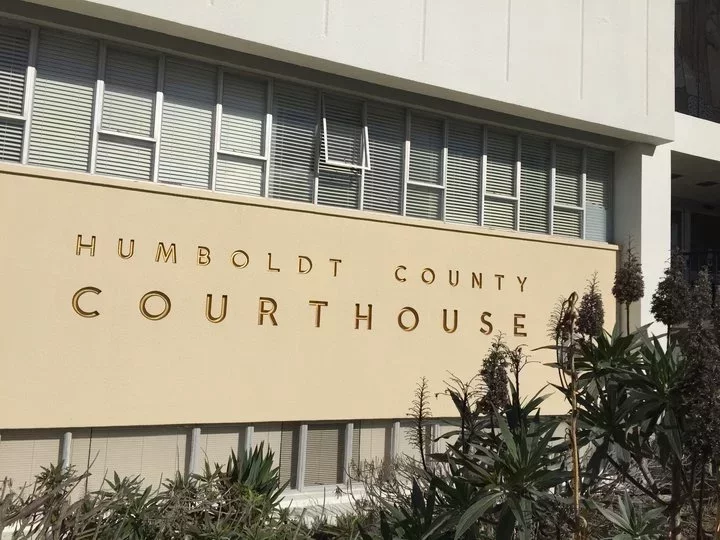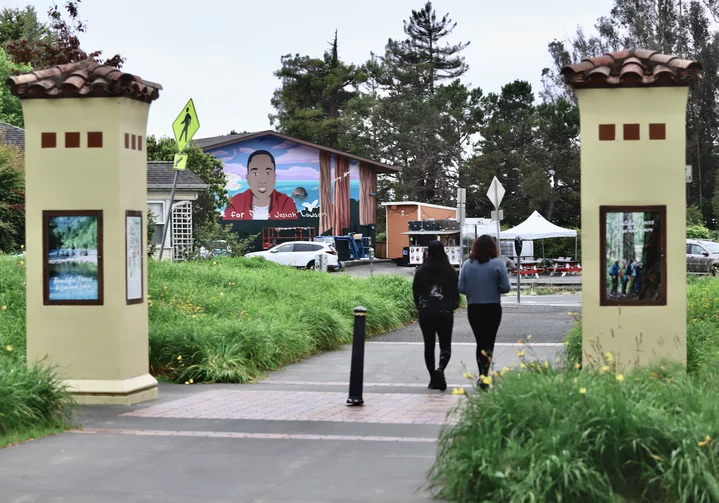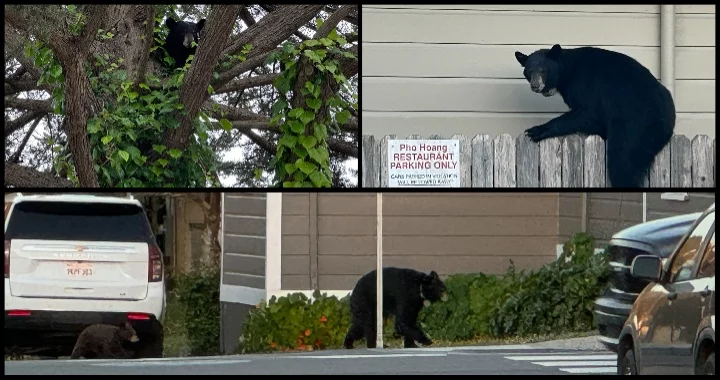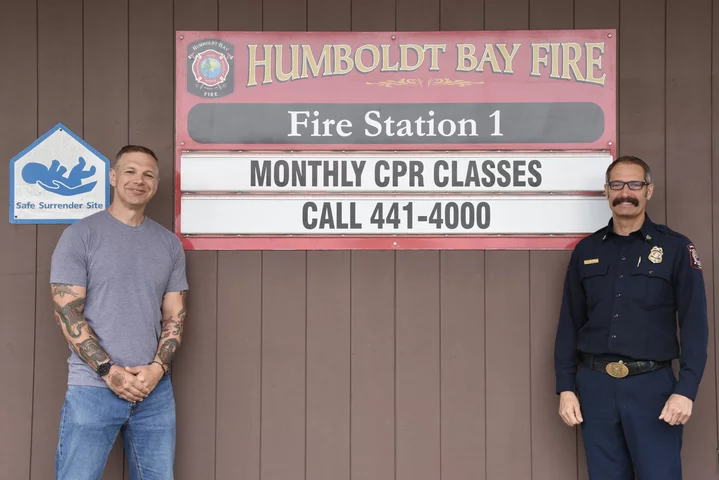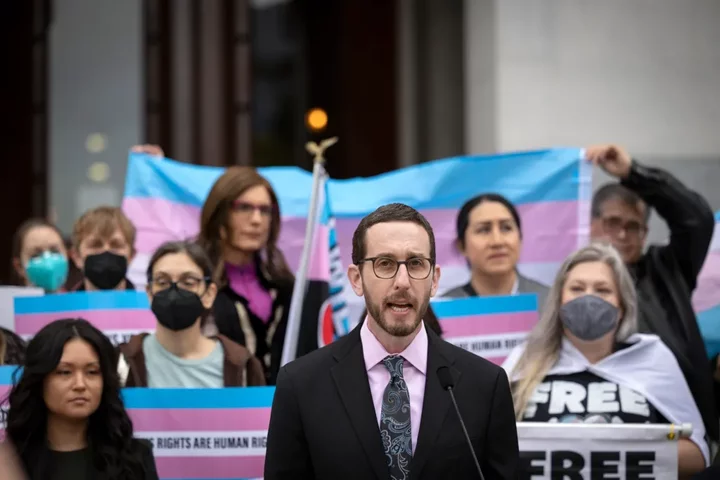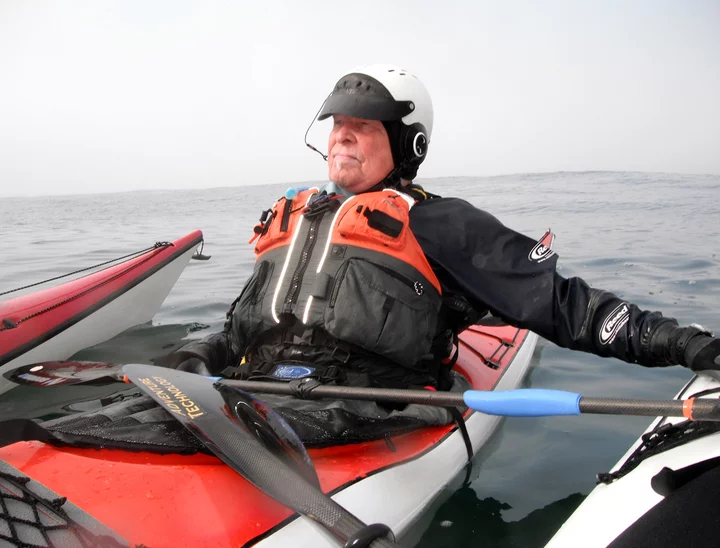The Humboldt County Civil Grand Jury is in Desperate Need of More Jurors! Investigate Your Government on Behalf of the Citizenry!
LoCO Staff / Friday, June 21, 2024 @ 2:27 p.m. / Local Government
File photo.
Press release from the Humboldt County Superior Court:
HUMBOLDT COUNTY CIVIL GRAND JURY NEEDS MORE APPLICANTS!!!
The Superior Court has received some applications since April, but we are still short! WE NEED MORE MEMBERS OF THE PUBLIC WILLING TO SERVE ON THE 2024/2025 HUMBOLDT COUNTY CIVIL GRAND JURY. PLEASE APPLY AND HELP SERVE YOUR LOCAL COMMUNITY’S INTERESTS! Your public service is needed and will be greatly appreciated!!
The Humboldt Superior Court empanels 19 citizens to act as an independent body of the judicial system each fiscal year (term: July 1-June 30). The Court also encourages citizens to apply and be considered to serve as alternates if and when vacancies occur during the term of service. The Court accepts applications from citizens representing a broad cross-section of the Humboldt County community. The Civil Grand Jury is currently meeting in-person one day a week and via Zoom one day a week (their weekly meeting schedule and time commitment may vary from 10-30 hours).
The primary work of the civil grand jury is to investigate and review citizen complaints concerning the operations of city and county government as well as other tax supported and non-profit agencies and districts. Based on these reviews, the grand jury publishes its findings and reports recommending constructive actions to improve the quality and effectiveness of our local government. The civil grand jury does not review or consider criminal indictments.
For more information and the application process, please visit the Court’s web site at:
or, contact Administration at 269-1245 with any questions you may have.
You may also download, complete, and email a Civil Grand Jury Questionnaire to: GrandJuryApps@humboldtcourt.ca.gov or we can email you an application. Thank you for your interest in serving your local community!
BOOKED
Today: 8 felonies, 5 misdemeanors, 0 infractions
JUDGED
Humboldt County Superior Court Calendar: Today
CHP REPORTS
No current incidents
ELSEWHERE
Governor’s Office: Coho salmon are making a comeback in the Russian River for the first time in 30 years
The Guardian: Parasite cleanses: why are so many people obsessed with intestinal worms?
Reuters: As Trump misses deportation goals, ICE pushes migrants to give up their cases
Reuters: Investors say Elon Musk’s SpaceX trading debut will be ‘craziest IPO’ ever
(PHOTOS) An Arcata Mural of David Josiah Lawson is in Progress, and You Can Help Paint it
Jacquelyn Opalach / Friday, June 21, 2024 @ 11:49 a.m. / Art
Local muralist Ben Goulart takes sky duties on the new Josiah Lawson mural in Arcata | Photos: Andrew Goff
With College Cove in the background, a garden of (real) native plants below and symbols sprinkled throughout, David Josiah Lawson’s image will overlook the university where he would have graduated in 2019.
Watching community members add paint to the north-facing wall of the D Street Neighborhood Center in Arcata on Thursday afternoon, Charmaine Lawson, Josiah’s mom, said she can’t imagine a better place for the mural.
“Everyone can see. It’s right above his university, and he would ride his skateboard down from campus to Safeway,” she said. “I feel like his footsteps, his memory, his vision, his light – everything is being shown right here.”
Written across the mural, in Josiah’s own handwriting, are the familiar words: “Justice for David Josiah Lawson.”
Seeing those words is a heavy thing, Charmaine said.
“It should be ‘Honoring the Life of David Josiah Lawson,’” she said. “It’s heartbreaking for me to see the words ‘Justice for David Josiah Lawson’ after seven years.”
Charmaine Lawson gets a painting lesson from local artist Blake Reagan
Lawson with outgoing Arcata City Manager Karen Diemer
The new exit view leaving Cal Poly Humboldt’s main southern walking path
Josiah was killed by stabbing at a college party in Arcata in April 2017, and no one has been convicted in connection with the killing. The Lawson family has fought tirelessly to see justice and keep Josiah’s story alive over the seven years since.
“For those people that know what truly happened and can shed some more light to what really took place that night… they’re out there, and they’re going to come forward,” Charmaine said. “If they still live here in Humboldt County, they’re going to see this and they’re going to be like: ‘Wow, this was unfair.’”
The mural is one result of a 2021 settlement agreement between the Lawson family and the City of Arcata. Charmaine expressed gratitude to the City of Arcata, and particularly Arcata City Manager Karen Diemer, for supporting the mural.
Project leader Benjamin Funke said that the mural is a community effort, start to finish. It’s a collaboration between the Lawson family, the NAACP Eureka Chapter, the City of Arcata, the Rotary Club of Arcata Sunrise and REBOUND, a DreamMaker project of the Ink People.
“I think it’s really important to the spirit of the piece – it’s about bringing this community together, and that’s why it’s at a community center. This location is just perfect,” Funke said.
“Every student that goes to school here, and every student that will go to school here, is going to be able to see this mural and ask who Josiah Lawson was. That story is never gonna go away. It’s gonna live.”
From location to process to the actual image, just about every element of the mural is symbolic.
The content itself is intentional down to each brushstroke. The design’s focus is the widely recognizable photo of Josiah – the one used on posters calling for justice – redrawn for the mural by his aunt. Because it was the natural environment that drew Josiah to Humboldt, he sits before College Cove and is framed by redwoods on either side.
“When you see it, you’re like, ‘Oh, I’ve been to that space before!’ and so that helps humanize Josiah,’” Funke said. “I think it’s going to have a much more uplifting, more celebratory feeling to it than what we’re used to seeing as his image in the public eye.”
A dreamy skateboarder made of cloud zooms through the sky, because Josiah loved skateboarding. And the team plans to add a message from Charmaine in a facsimile of her handwriting somewhere on the mural. That message will convey that the artwork is “not just for DJ – this is for every missing and murdered person in Humboldt County,” Charmaine said.
“For me, this is just a small token for my son but a bigger token for those families who are seeking justice.”
Charmaine Lawson painting on Thursday afternoon. Photo: Jacquelyn Opalach
Planted along the bottom of the wall will be a garden of native flower- and fruit-bearing plants, supplied and maintained by Arcata Rotary. Charmaine said she likes to imagine people coming to pick a berry and talk to Josiah.
Though progress is moving quickly, the team said they’ll be working on the mural at least through the weekend. Community members are invited to come pick up a paintbrush and climb aboard the aerial lifts to help finish it up.
“It’s an honor to get to work on a project like this,” said Blake Reagan, one of the muralists working on the piece. “There’s a lot of feelings involved. I try to express joy in my work, but sometimes art is more than joy. Art can be in memory of people. Art can question justice. Art has a big spirit, and hopefully this mural encompasses a few of the purposes for murals.”
###
Ben Goulart
Mariqus Ludd
Blake Reagan
Charmaine enjoys the new mural of her son along with project leader Ben Funke
BEAR UPDATE: The Eureka Bears and the Arcata Bears and the Samoa Bears are the Same Bears, and the Mama Bear Was Hurt in a Collision With a Car
Gillen Tener Martin / Friday, June 21, 2024 @ 11:06 a.m. / Wildlife
Photos, clockwise from upper left: The bears in a tree at Pierson’s (Andrew Goff). The bears raiding Pho Hoang in Arcata (Daniel Pacheco Browning). The bears cruising down Arcata’s G Street (Zachary Meisel). Go home, bears!
Have you, like us, been wondering what happened to the bears removed from the tree by Pierson’s last week? Or if the bears spotted out for a sunset stroll in Arcata on Saturday were the same urban ursidae as the family in the tree?
It’s been a bears-filled couple weeks around here, so Peter Tira, information officer with the California Department of Fish and Wildlife, hopped on the phone with the Outpost to provide a much-needed situation report.
First off, yes – the urban bears camped out in the Pierson’s tree and spotted hopping over the Pho Hoang fence are the same mother and cub. The pair are now in Samoa.
Bears have one of the best senses of smell in the animal kingdom (seven times greater than a bloodhound!), so Tira said that peninsula residents should secure any and all potential smelly attractions: garbage should be tightly lidded, pet food (even chicken feed) kept inside, bird feeders emptied and fruit trees monitored for fallen bear treats.
“We don’t want to see these bears any more comfortable than they already are in urban areas,” Tira said, “we want them to make their way back to the wild.”
After removing the bears from their tree perch on the morning of June 10, CA Fish & Wildlife deposited the family in forested habitat about 30 miles away, according to Tira. The sow (mom) was collared, and Fish & Wildlife’s Northern Region headquarters has been tracking the family’s movements since.
Over the course of last week, the bears crossed Highway 299 near Blue Lake, followed the river to Arcata – making it to Northtown by Saturday evening – and followed the curve of Humboldt Bay out to Manila.
On Tuesday night, the mother bear was struck by a vehicle on the Samoa Peninsula around 10 p.m. The driver reported the incident, including that the bear they hit was collared, and Tira said the sow is injured but still mobile. The cub remains unharmed.
So, why have these bears taken to the urban coastal lifestyle? Simple: They’ve learned that Eureka, Arcata and even more sparsely populated communities like Samoa are hotspots for free food.
“It’s a lot more calories for a lot less work,” Tira said, adding that while bears catching on to the easy snackings of developed areas is common in California, the pair’s return to town is not what Fish & Wildlife wanted to see happen.
If mother and cub become an ongoing problem, Fish & Wildlife will remove them to wild habitat (again), according to Tira.
Sightings can be reported to the Fish & Wildlife Northern Region headquarters at (530) 225-2300 or askregion1@wildlife.ca.gov.
Pictures can also be sent to the Outpost at lostcoastoutpost@gmail.com.
LoCO INTERVIEW: Humboldt Bay Fire Chief Opens Up About Ongoing Staffing Crisis, Losing Employees to Other Local Fire Districts, and the Future of the Department
Isabella Vanderheiden / Friday, June 21, 2024 @ 10:30 a.m. / Emergency , Fire
Humboldt Bay Fire Captain Brandon Harlander and Chief Sean Robertson at Fire Station 1 in Eureka. Photo: Isabella Vanderheiden.
###
Humboldt Bay Fire Chief Sean Robertson is trying to keep his department afloat amid an “acute staffing crisis” that has plagued the agency for nearly two years.
Robertson, who will retire as chief at the end of this year, did not attribute the staffing crisis to a single issue, but said non-competitive wages have made it difficult for Humboldt Bay Fire to retain employees. In the last two years, the department has seen 17 employees, including several high-ranking staff, leave for higher-paying positions with the Arcata Fire Protection District and other agencies in the Bay Area. The department is currently down by seven people, which has forced the department to implement rotating closures at its five stations.
The Outpost stopped by Fire Station 1 in Eureka this week to chat with Chief Robertson and Brandon Harlander, fire captain paramedic and union president, about the ongoing staffing crisis and the department’s future. Our conversation has been edited for length and clarity.
###
LoCO: Can you describe the current staffing challenges at Humboldt Bay Fire? How many positions are currently vacant?
Robertson: We have an acute staffing crisis; we’re essentially down by seven people right now. We have 48 firefighters designated in our staffing model but we’re currently at 45 because we have three permanent position vacancies. We also have four temporary vacancies that are either from a military leave deployment, illness or injury, and those have [extended] from one to 12 months.
We have a policy that says if we have this many long-term vacancies – a month or more – we have to shift to a four-station deployment model. There are many reasons for that policy, but the primary motivation is to protect our firefighters from getting burned out because that happens from mandatory overtime. It is also more fiscally responsible because our overtime budget has, historically, been significant as we often have a staffing shortage.
We can usually backfill people leaving the department via recruitment but we’re not seeing qualified candidates. We’ve been recruiting firefighters since January and received about 30 applications. From our first round of interviews, 11 people qualified and five came to our invited interviews but we still didn’t get any good candidates out of that process. We’re going to try again but if we’re unable to fill those positions we’re likely going to be in this staffing model for the rest of the year because it takes several months to get people through our background and physical process to get hired, and then it takes another two months to get them through all the training they need.
We’ve lost 17 people in the last two years to higher-paying agencies. Almost half of those people went to the Arcata Fire District because they passed a special district tax – Measure F – that enabled the district to offer significantly higher wages and a great benefits package. They took seven of our people, almost all of [whom] had 10 or more years of experience and were in the upper ranks. That had a huge effect on us. That started two years ago, and since then the rest of the people we lost have gone to other agencies across the state.
The fact is, we’re one of the lowest-paid municipal fire departments in the state and there are a lot of jobs out there. If you go to Arcata Fire, you can make $30,000 more a year as a captain. And if you go to the Bay Area you can make double what you would make here. We can’t compete with the Bay Area, but we’re trying to be more competitive locally.
Our primary concern, again, is the acuteness of this crisis. We can implement short-term solutions but it’s going to compound eventually. And in the next five years, a lot of our staff is going to be approaching retirement age and they’re gonna leave. We’re going to lose a huge amount of knowledge and experience, and we’re trying to figure out how to solve that problem. We expect that we will have to keep one station closed through the end of the month, but we’re hoping to staff all five stations in July because some of those people on leave are going to come back.
Harlander: I just want to add that the citizens have been very supportive of us with the passing of Measure H [the 1.25 cent sales tax] on the city side and the benefit assessment on the fire district side, which won’t take place till 2025. We just want the citizens to know how much we appreciate them and ask that they be patient with us.
We’re unique compared to law enforcement because they can stack calls and save some of them for later. We can’t do that. We have to go now, whether it’s a call about someone’s house flooding, their water heater catching on fire, the classic cat stuck in a tree, and everything in between. And when we’re not on an emergency, we’re training for an emergency.
LoCO: How has this staffing shortage impacted the department’s response time?
Robertson: Yes. We’re seeing a one- to three-minute increase in our response times. In the last two months, we’ve had nearly 10 significant incidents in Station 4’s jurisdiction, including a few structure fires and a gunshot situation. That delay in responding to those significant issues can have a consequence, but our firefighters have continued to demonstrate exceptional skills through this challenging period. We’re very fortunate to have the people that we have. Again, it just reinforces the need to have and keep those experienced firefighters.
Our call volumes are always fluctuating but with this spike in significant incidents, we have much more overtime that needs to be filled. The regular rest cycle we have programmed into our schedule is not occurring, and that fatigue builds up over time. It’s not just physical, it’s emotional and mental because they’re not getting the rest they need at home and their families are affected. That’s why we’ve gone back to rotating between stations rather than keeping Station 4 closed.
Harlander: Being down to four stations becomes a safety issue for both the firefighters and the citizens, and it becomes a less safe community for everybody. We understand our job is inherently dangerous, but when we lose that extra personnel that we would normally have at the scene of a fire or vehicle extrication that can affect the patient or victim involved.
LoCO: What do you attribute the staffing crisis to? I know fire departments are navigating similar issues across the country, but is there anything impacting Humboldt Bay Fire specifically?
Robertson: There are several variables. Post-COVID, we’re seeing a totally different labor pool out there, and I think that’s really impacting every industry. But for [fire departments] specifically, we’re all competing for a limited number of personnel and employees, and everybody else is able to pay their employees way more than we are.
As for local barriers, there is no way to get your Fire Fighter 1 Certification here locally. You have to go to a certified testing center to get that certification, and the nearest ones are in Santa Rosa and Shasta. We try to hire local people as much as possible, but that’s become an issue.
Since COVID, I would say 90 percent of the people who have applied have no experience. They worked in a simple retail job or at a warehouse before the fire academy, they got their EMT and Fire Fighter 1 certifications, and now they’re looking for a job. In these last four years, we’ve had problems dealing with basic social skills and basic task functions. Like, we have to teach someone how to use a screwdriver. We have to teach them how to talk to people and interact.
Harlander: These are real conversations that we’ve had.
Robertson: And I don’t think this is something that’s just specific to the fire service. The police department has had a huge staffing shortage as well, but they’re much more competitive locally than we are. And on top of that, we’re competing against every other service industry where there are safer and easier jobs that people can do. That said, we think it’s the best job in the world. And there aren’t a lot of jobs where you can go through six months to a year of training and start out – even with our bad pay here – at $52,000 a year. That’s still pretty significant.
LoCO: I know you, Chief Robertson, have brought this issue to the Eureka City Council at least twice in the last year. How has the council responded to the ongoing staffing crisis? Has Humboldt Bay Fire asked for additional funding from the city?
Robertson: The City of Eureka and the Humboldt No. 1 Fire Protection District are our parent agencies, and they provide funding for our JPA (Joint Powers Authority), which we formed eight years ago. I have constantly asked the JPA Board of Directors to help support our firefighters to avoid having to lose so many people. Of course, it’s very complicated as labor contracts often are, especially with a JPA that has two parent agencies. There’s definitely support from the JPA, but the city and the district need to support their firefighters more, and I think they’re well aware of that. The challenge is how to do that and be fiscally sustainable.
When Measure H passed in 2020, the city had more revenue coming in but the district’s revenue was still relatively flat because of COVID’s effect on sales tax. We were able to absorb it and maintain what we had because of our reserves. And then we came out of it with this acute staffing crisis because of staff joining Arcata Fire.
In the fall of 2022, I asked if we could provide an essential worker stipend to our firefighters like the city had given to the workers earlier that year, but because we don’t qualify for ARPA (American Rescue Plan Act) funding, we couldn’t pass anything onto our firefighters. We have to rely on the county or cities to give us ARPA money. The city was able to provide an essential worker stipend to our firefighters. We were also able to advance the last year of the COLA (cost-of-living adjustment) by six months. So, that was a way to at least take care of the people that are still here, right? But it was too little too late for a lot of other folks.
We’ve been trying to negotiate a Memorandum of Understanding (MOU) with the JPA [and the Humboldt Bay Firefighters Local 652] – which we passed at [Wednesday] night’s meeting – but it’s only for 18 months. The MOU asks the JPA board to help our firefighters more to prevent us from losing more people.
LoCO: You mentioned earlier that Arcata voters passed a special district tax to help fund operations at the Arcata Fire Protection District. Could the JPA do something similar?
Robertson: Unfortunately, we don’t have that ability. We’ve certainly discussed forming a special district, which is what Arcata Fire has done, but that is another process.
We don’t really have the ability to go get our own funding. We’ve looked at several alternative revenue sources, including community paramedicine with St. Joe’s Hospital, an alternative interfacility transfer agreement with the hospital, or something similar to what the CSET (Community Safety Engagement Team) is doing. You know, assisting a nurse or a mental health clinician in taking care of people on the streets to prevent them from going to the hospital. However, there’s a lot of legislature [sic] that prevents us from doing that. We’ve looked at almost every opportunity we can to obtain more independent funding but it’s very complicated.
LoCO: I was anticipating that this conversation was going to be more focused on the need to get the city council or voters on board for a sales tax measure to give firefighters a wage hike, or something to that effect, but this is, as you said, very complicated.
Robertson: It is, it’s complicated! That’s a big part of this issue. And I would say the police union, or other city departments, are probably dealing with something similar. The City of Eureka, for example, is having a hard time hiring an assistant city attorney because it’s competing with other cities and the county. The county seems like they’re doing fine with recruitment, but look at their budget right now. What’s going to happen next year? They’re probably going to have to lay off a bunch of people.
And looking at the Arcata Fire District, they offered this amazing contract and an incredible benefits package to their employees but now they’re not offering those same benefits because they’ve gone through all of the revenue they got from the special tax. My perspective is a bit biased because of the loss of our people, but I started in Arcata 28 years ago, so I have a deep affiliation with them. So, is their funding actually sustainable? When the tax sunsets in 2030, will it be renewed? Have they been good stewards of their money? I’m a taxpayer in Arcata and I’m going to be thinking about things like that. The pressure is on us all the time, especially the fire chief.
It wasn’t an easy decision when we reduced service to four stations but it wasn’t sustainable. It was crushing us. It’s important to emphasize that this isn’t easy for anyone. It’s not that the city council sucks and they don’t support us, it’s not that the administrators suck, the unions suck, etc. They want to support us and we’re all trying to work on the same thing. But the reality is, we’re having a huge crisis.
Harlander: We are a young department and our labor group is working on building those relationships with JPA members and the city council to educate them on what we do. There are some misconceptions about what we do and don’t do but we’re working on building a positive relationship and moving forward because we haven’t really had a relationship in the past. It’s been an us versus them dynamic and we’re trying to get rid of that that mindset. It’s been an uphill battle.
LoCO: That reminds me, I came across a statistic somewhere – possibly from Humboldt Bay Fire – that said something like 90 percent of the calls fire departments respond to are non-fire calls. Is that true?
Robertson: That is true. Only four percent of our calls are for fires. We go to a lot of other calls that you could say are fire-related, like smoke checks. But our call breakdown, which is coded into our system in a particular way, says four percent of our calls are for actual fires. Around 60 percent of our calls are medical. The rest are false alarms or what we call “good intent” calls where people just call us for whatever their problem is like their water heater is leaking or there’s a bear in a tree.
LoCO: I mean, I do get it. Lighting a water heater can be scary!
Harlander: We’re more than happy to do it. That’s our job.
Robertson: Another thing that comes up frequently is people asking why we send our giant ladder trucks to a medical aid call or a tree down on the roadway. We have to be ready for anything after that. We had a call where the crew went to medical aid at the Rescue Mission and then they got a call right after for extrication on the highway.
If we didn’t have the truck, we wouldn’t have all the tools we may need on hand or there would have been a delay if we had to go back and get the truck. People don’t realize that, but that’s why we have these ginormous trucks.
LoCO: What are the next steps for the Humboldt Bay Fire? And, Chief Robertson, can you talk about your career trajectory and how you will continue to support the department from afar?
Robertson: As I said, we’ve implemented this MOU with the JPA, and we’re hoping that that prevents anybody else from leaving. But the next step is preparing for the next year when we need to negotiate again and analyzing what our needs will look like.
The Fire Fighter 1 Academy development at College of the Redwoods is my trajectory. I had planned to retire or step down as chief after five years when I initially took this job because I think that’s an effective period of time for a fire chief. This opportunity to be a full-time faculty at CR only came up two months ago when they created the position. The goal is to create an accredited fire academy. I think that is going to be a key part of recruitment and retention for Humboldt Bay Fire and other local fire agencies. I’ll start there in August, and our fall class is already full with 35 people. I’ll still be with the fire department to offer any advice through December, but a good chief steps out of their role to let the new chief do their job.
LoCO: Is there anyone in line to take over the position?
Robertson: The board made a selection last night and the candidates will be notified today. Once that’s all concluded, we’ll write up a press release.
LoCO: And what’s next for you, Captain Harlander?
Harlander: I’m going to continue to build this place and make it great. This is an awesome organization and I wish more people would come to work here. We’re a really, really family-oriented, tight-knit group of people. A lot of us hang out on our days off. And I’ll just say, I’m not going to be chief any time soon! I just want to keep building this place up.
LoCO: Is there anything else either of you would like to share with our community?
Robertson: We appreciate the community’s support and we encourage them to be more engaged with their fire department by learning more about what we do through our various social media accounts and engaging with the city council and the JPA board. We are committed to our mission statement, which is a “commitment to community service through leadership, vision, and integrity.” We have the obligation to respond when called and that’s what we do. We just need some understanding of our current position and its effect on the community with the station closure.
Harlander: I would also like to encourage people to attend city council and JPA meetings. Also, come by the station for a visit! We love having visitors and we will always do a station tour and talk about our job because we love to do it. And if they’re interested in a career, you can always come on a ride along for a couple of hours or 24 hours to see what we do.
‘It’s Frustrating’: Why a Gay California Senator Is Annoyed by His Own LGBTQ Health Info Bill
Ryan Sabalow / Friday, June 21, 2024 @ 7:48 a.m. / Sacramento
Sen. Scott Wiener, seen here in 2022 announcing a bill to protect transgender kids, has a bill now to ensure LGBTQ questions on health forms. Photo by Miguel Gutierrez Jr., CalMatters
State Sen. Scott Wiener has introduced 52 bills this session, but he’s annoyed that he had to author one in particular.
“I’m gonna be honest that it’s frustrating that I had to bring this bill,” he told the Assembly Public Health Committee this week. “I should not have had to bring it.”
The legislation that irks the San Francisco Democrat is his Senate Bill 957, which would force California’s health officials to do what Wiener says they should have been doing anyway: provide a place on health care forms for people who identify as LGBTQ to voluntarily note their gender identity and sexual orientation.
For years, other Californians have been asked to voluntarily declare their race, age and whether they’re a man or a woman on various health care forms, providing researchers with important demographic data that helps inform treatments and responses to public health crises, Wiener said.
“If we’ll recall back to the beginning of the pandemic, when we realized that older people were much more likely to die from COVID and when we realized that there were much higher rates of infection and death in Black and brown communities, the only reason we knew that was because we had demographic data,” Wiener told the health committee. “Because when people would go seek health services, they were asked demographic questions.”
But Wiener, who is gay, said there’s not much data available for researchers when it comes to folks like him or lesbian, bisexual, trans and queer Californians. A big reason: state law, he said, gives health officials the option to place LGBTQ demographic questions on state and local health forms.
Wiener’s bill would require it.
He said it would close a loophole that he describes as “a massive blind spot in the system” – and one cited in a state auditor’s report last year. The report found that almost all of the dozens of state and local health care forms auditors examined were missing LGBTQ demographic questions. The audit noted that the California Department of Public Health has a new disease surveillance and reporting system scheduled to go live next year that would improve reporting.
Local health officials, however, told auditors they needed state guidance about what data to collect, something Wiener’s bill seeks to address by requiring them to collect sexual orientation, gender identity and intersexuality data “on any forms or electronic data systems, unless prohibited by federal or state law,” according to the bill’s analysis. State health officials would also have to provide a public report to the Legislature detailing their progress.
The bill’s sponsors include Equality California, California LGBTQ Health & Human Services Network, and the San Francisco AIDS Foundation. Members of the California Legislative LGBTQ Caucus are co-sponsors.
So far, only Republicans have voted against Wiener’s bill, which passed the Assembly health committee this week after advancing through the Senate this spring.
But Assemblymember Marie Waldron, a Republican from San Diego, wasn’t one of them. The former Assembly Republican leader told her colleagues on the health committee that the data collected could save lives.
“The more data available to health providers, I feel, the better,” she said. “We’re always talking about data-driven care and personalized medicine, and we can’t do it without the data.”
###
CalMatters.org is a nonprofit, nonpartisan media venture explaining California policies and politics.
Still Need Your Landline? California Regulators Just Stopped AT&T From Pulling the Plug
Khari Johnson / Friday, June 21, 2024 @ 7:43 a.m. / Sacramento
Photo by tommaso picone via Pexels.
California’s Public Utilities Commission yesterday rejected AT&T’s application to stop providing landlines and other services in areas where there is no other option.
Its 4-0 vote came after a judge determined the application by AT&T California was “fatally flawed.”
AT&T is the “carrier of last resort” for California, an official designation that means it covers most major cities, rural communities, and the land of more than 100 tribal governments. To find out if your home is in that area visit this website. The commission first labeled AT&T a carrier of last resort nearly three decades ago.
More than a dozen speakers during the public comment period at Thursday’s meeting supported keeping AT&T’s carrier-of-last resort designation and landlines. Previously, more than 5,000 public comments were written in response to AT&T’s application and nearly 6,000 people attended eight public forums held earlier this year. Numerous commenters said that, due to inconsistent cell coverage in their area, their landline is their primary means of communication with family, medical providers, and the outside world in the event of an emergency. Those concerns are particularly important for senior citizens, people with disabilities, and people who say they are sensitive to electromagnetic activity.
AT&T has argued that the people its landlines are now serving in the areas in question can turn to voice over internet service offered by cable providers or to mobile phone service offered by wireless providers like Verizon.
Steve Hogle lives in rural Sonoma County and told the commission that spotty cell phone coverage was a danger to his family during the 2019 Kincade wildfire.
“If we didn’t have a copper landline we would’ve not known about the evacuation and the extremely serious fire that went through here and most of our property,” he said. “I don’t want (voice over internet service) because if there’s no power, there’s no internet, and all these things are of extreme importance to the safety of this community.”
The company has attempted to end carrier-of-last-resort designation obligations in roughly half of U.S. states, but those efforts don’t always stay within the confines of the law, according to federal prosecutors. In 2022, AT&T Illinois agreed to pay a $23 million fine to resolve charges it attempted to influence former Illinois House Speaker Mike Madigan.
“If we didn’t have a copper landline we would’ve not known about the extremely serious fire.”
— Steve Hogle, Sonoma County
The commission’s decision does not bring an end to the carrier-of-last-resort debates in California. AT&T and roughly a dozen members of the California Legislature have publicly expressed support for Assembly Bill 2797, which would effectively bring an end to some carrier-of-last-resort obligations. The California State Association of Counties, Rural County Representatives of California, and Urban Counties of California said last week that they oppose the bill, adding in a letter to the bill’s author that it would “leave large swaths of the most vulnerable Californians without reliable and affordable access to basic telephone service.”
The Public Utilities Commission also voted 5-0 to begin proceedings to change rules for companies that are designated a carrier of last resort. It’s time to modernize those rules, said commission president Alice Reynolds, because a lot has changed in the past 30 years, including a shift toward cell phones and away from landlines, and it’s now part of the commission’s mandate to make high-speed internet access universally available.
“I’m hopeful that through this new rulemaking, we can really modernize these programs and move towards the future to meet our broadband for all objectives,” she said ahead of the vote.
###
CalMatters.org is a nonprofit, nonpartisan media venture explaining California policies and politics.
OBITUARY: John Roger Day, 1940-2024
LoCO Staff / Friday, June 21, 2024 @ 6:56 a.m. / Obits
John Roger Day
Jan.
30, 1940 – May 12, 2024
John Roger Day, at 84, “crossed the bar” on Sunday, May 12, 2024 at home in Arcata with his wife, Marcella, and other cherished friends by his side.
Born on January 30, 1940 in Fort Scott, Kansas to parents, Randall M. Day and Meda Peebles Day, John grew up in Moran, Kansas. From his childhood to early adulthood, everyone called him Roger. His curious nature would get him into mischief leading to stories he would share later in life. He mentioned that his father would periodically say, “Roger, what’d you do now?” as he’d get into some sort of naughtiness. He loved animals and shared his mother’s whimsical notions of cats such as, “when cats eat standing, they’re having a snack and when they eat while sitting, they’re having a meal.” In his latter adult years, he would be addressed by his first name John. When he moved to the North Coast and took up sea kayaking, the nickname “sea dog” would be added.
At age 21, John embraced the experience of being a smoke jumper for a season with the U.S. Forest Service. With the current events of the time, he would later that year enlist in the U.S. Air Force, serving four years. After the military, he pursued a formal education and in 1970 he earned a Bachelor’s from Wichita State University and in 1971 a Master’s from Kansas State Teachers College of Emporia. From his liberal arts education within psychology and sociology he would work in fields related to counseling and social services among smorgasbord of other job experiences that would cross his path in the next decades. Some of his jobs included working as an apartment complex manager, guidance counselor, uranium mine worker, pizza maker, bartender, restaurant manager and family therapist. John lived in various states after Kansas, gradually ending up on the west coast. His last job before he retired was in Grants Pass, Oregon where he worked as a family therapist for child protective services.
When John retired in the early 2000s in Brookings, Oregon, he became interested in kayaking, rivers and the ocean. He immersed himself in learning and after multiple capsizes, being constantly soggy, bruised, and worn out — he learned the skills of paddling and the Eskimo roll. He went on to help teach others about sea kayaking and rolling on the North Coast. He met a group of kayakers in Humboldt County and would drive from Brookings most weekends to paddle with them out of Trinidad. He also met his current wife, Marcella, kayaking and moved to Arcata in 2010. John “Seadog” Day loved paddling out of Trinidad on Sundays in all weather conditions and would continue paddling until symptoms of metastatic cancer began affecting his health in 2023.
John also relished in all the technical gear and outfitting that came with kayaking and the outdoors. He took his motto “fear no gear” to multiple levels, not only exploring these products but also modifying them with a little extra flare such as putting easy-to-grip insulation around a water bottle, modifying a spork to have a bottle opener, replacing the zipper pull with a reflective cord variation, adding little reflective dots on caps — all of these modifications were called, “John Day upgrades.”
His curiosity has brought him to new places and a wealth of experiences. This past December he wrote some observations about why stories are so great to share:
“Negotiating life and getting the most of it follows happy trails. Take journeys that reach your core, all the while giving your interests and curiosity a workout…. A strong curiosity and interest in all things will force you to connect and make you healthy. You will become a fully operating member of humanity, opened to so many stories you’ll not be able to digest it all! …There are no strangers out there — only people who may be strange at first, but will become an accomplice in life once you connect with them!”
John is survived by his wife, Marcella Ogata-Day, daughter by a previous marriage, Jessica Day, a multitude of loving friendships which he made a connection and an impact on during his lifetime.
John wanted the same poem that was read when his mother died to be read when he passed on:
Crossing
the Bar
by
Alfred, Lord Tennyson
Sunset
and evening star,
And
one clear call for me!
And
may there be no moaning of the bar,
When
I put out to sea,
But
such a tide as moving seems asleep,
Too
full for sound and foam,
When
that which drew from out the boundless deep
Turns
again home.
Twilight
and evening bell,
And
after that the dark!
And
may there be no sadness of farewell,
When
I embark;
For
tho’ from out our bourne of Time and Place
The
flood may bear me far,
I
hope to see my Pilot face to face
When
I have crost the bar.
###
The obituary above was submitted on behalf of John Day’s loved ones. The Lost Coast Outpost runs obituaries of Humboldt County residents at no charge. See guidelines here.

